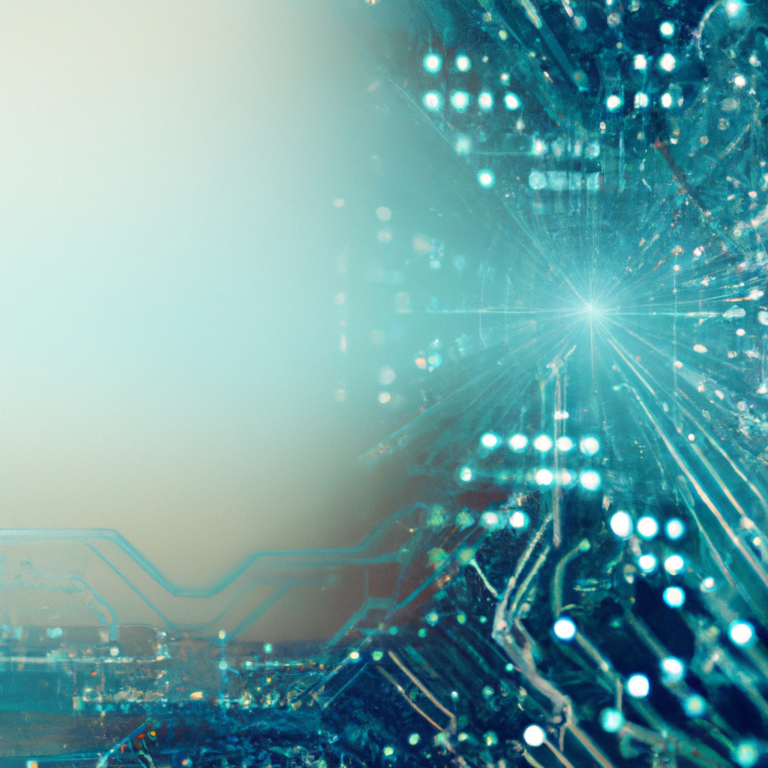The Risks Of AI

Imagine a world where machines are capable of complex tasks, learning from data, and even making decisions on their own. This is no longer a distant futuristic concept; it is the reality we are currently living in. Artificial Intelligence (AI) has emerged as a game-changer, revolutionizing various industries and enhancing our daily lives in countless ways. However, behind the incredible advancements lie potential risks and challenges that need to be addressed. In this article, we will explore the risks posed by AI and delve into the ethical considerations surrounding this rapidly evolving technology. Get ready to uncover the fascinating world of AI and the cautionary tales that come with it.

1. Security and Privacy Risks
Artificial intelligence (AI) has brought about numerous benefits and advancements in various fields, but it also poses risks to security and privacy. These risks manifest in several ways, including data breaches, cyber attacks, and invasion of privacy.
1.1 Data Breaches
With the increasing reliance on AI technologies to process and store vast amounts of data, the risk of data breaches is a pressing concern. Organizations that utilize AI must ensure that robust security measures are in place to protect sensitive information from unauthorized access. Breaches of personal data can lead to severe consequences, including identity theft, financial loss, and reputational damage.
1.2 Cyber Attacks
AI systems, despite their intelligence, can still be vulnerable to cyber attacks. Malicious actors may exploit vulnerabilities in AI algorithms or systems to gain unauthorized access, manipulate data, or disrupt system functionality. These attacks can have far-reaching implications, affecting critical infrastructure, financial institutions, or even national security.
1.3 Invasion of Privacy
As AI becomes more integrated into our daily lives, concerns about the invasion of privacy arise. AI technologies often collect vast amounts of personal data, raising questions about how this information is used and protected. Privacy breaches can occur when AI systems are not adequately designed to prioritize user privacy or when data is shared without consent. Safeguarding privacy in the age of AI requires robust regulations and ethical considerations.
2. Ethical Considerations
While AI has the potential to revolutionize industries and improve efficiency, ethical considerations must not be overlooked. Three key ethical challenges associated with AI are unintended bias, lack of accountability, and job displacement.
2.1 Unintended Bias
AI systems are trained on vast datasets that may contain inherent biases, reflecting societal prejudices and inequalities. These biases can then be perpetuated and magnified by AI algorithms, leading to discriminatory outcomes in areas such as hiring processes or law enforcement. It is crucial to address these biases to ensure fairness and mitigate potential harm.
2.2 Lack of Accountability
As AI systems become more complex and autonomous, determining responsibility for their actions becomes increasingly challenging. When AI systems make decisions that have tangible consequences, it is vital to establish accountability frameworks to hold individuals or organizations responsible for the outcomes. Lack of accountability can erode public trust and hinder the ethical deployment of AI.
2.3 Job Displacement
The rise of AI and automation technologies introduces the possibility of job displacement. While AI can enhance productivity and create new job opportunities, it can also render certain roles obsolete. This displacement may lead to economic inequality and a lack of job security for individuals. Mitigating these concerns requires proactive measures, such as reskilling programs and policies that ensure a just transition to an AI-driven future.
3. Loss of Human Control
AI systems that operate autonomously pose potential risks due to the loss of human control. These risks manifest in the form of autonomous weapons, unpredictable behavior, and dependence on AI systems.
3.1 Autonomous Weapons
One of the most concerning aspects of AI is the increasing development of autonomous weapons. These weapons can select and engage targets without human intervention, raising ethical and humanitarian concerns. The lack of human judgment and accountability in warfare could have catastrophic implications, necessitating strict regulations and international agreements to prevent their misuse.
3.2 Unpredictable Behavior
AI systems are designed to learn from data and make decisions based on patterns and algorithms. However, their complex nature can sometimes result in unpredictable behavior. This unpredictability can lead to unintended consequences, errors, or actions that are difficult to interpret. Thorough testing, validation, and ongoing monitoring are crucial to mitigate the risks associated with unpredictable AI behavior.
3.3 Dependence on AI Systems
As AI becomes more advanced and integrated into various sectors, there is a growing concern about society’s increasing dependence on AI systems. Reliance on AI can lead to overreliance, diminishing human skills, and critical thinking abilities. It is essential to strike a balance between leveraging AI’s capabilities and maintaining human control and agency to avoid potential vulnerabilities or unintended consequences.

4. Unemployment and Economic Disparity
The widespread adoption of AI technologies brings potential consequences for employment and economic disparity. These risks include the automation of jobs, skill gap and job insecurity, as well as the concentration of wealth.
4.1 Automation of Jobs
AI and automation technologies have the potential to automate repetitive and routine tasks, leading to job displacement in certain industries. While job automation can improve productivity and create new job roles, it may also lead to unemployment for individuals whose skills are no longer in demand. Balancing automation with measures to reskill and upskill workers is essential to address this issue.
4.2 Skill Gap and Job Insecurity
The rapid advancement of AI can result in a skill gap, where the demand for specialized AI-related skills outpaces the available workforce with such expertise. This skill gap can contribute to job insecurity for individuals who lack the necessary skills to adapt to an AI-dominated job market. Investing in education and training programs can help bridge this gap and prepare individuals for the future of work.
4.3 Concentration of Wealth
The advent of AI and automation has the potential to consolidate wealth and exacerbate economic disparities. Industries leveraging AI technologies may experience substantial productivity gains, leading to a concentration of wealth in the hands of a few. Ensuring that the benefits of AI are distributed equitably requires policies and measures that promote inclusive economic growth and reduce inequality.
5. Adversarial Attacks
Adversarial attacks involve deliberate attempts to manipulate AI systems for malicious purposes. These attacks can include manipulation of AI systems, deceptive content generation, and exploitation of vulnerabilities.
5.1 Manipulation of AI Systems
AI systems can be vulnerable to manipulation, wherein adversaries intentionally feed them misleading or biased data to skew the outcomes. This manipulation can have severe consequences, such as biased decision-making, misinformation propagation, or compromised system integrity. Implementing robust security measures, including data validation and model robustness testing, is crucial to mitigate these risks.
5.2 Deceptive Content Generation
AI technologies, such as deepfakes, enable the generation of highly realistic and deceptive content. These deepfakes can be used to spread misinformation, manipulate public opinion, or defame individuals. Such malicious applications of AI necessitate the development of countermeasures, including advanced detection techniques and digital literacy programs to combat the spread of deceptive content.
5.3 Exploitation of Vulnerabilities
AI systems, like any other software, are susceptible to vulnerabilities that can be exploited by malicious actors. Adversaries may attempt to identify and exploit weaknesses in AI systems to gain unauthorized access, manipulate data, or compromise system functionality. Regular security audits, updates, and patches are essential to protect AI systems from exploitation and maintain their integrity.
6. Lack of Transparency
The lack of transparency in AI systems presents challenges in understanding and interpreting their decision-making processes. This lack of transparency is apparent in the black box problem, algorithmic bias, and decision-making opacity.
6.1 Black Box Problem
The black box problem refers to the difficulty in comprehending how AI systems arrive at their decisions or recommendations. Some AI algorithms are highly complex and operate like “black boxes,” making it challenging for users or even developers to understand the reasoning behind their outputs. Ensuring transparency and interpretability of AI systems is vital to build trust, enhance accountability, and address concerns related to bias or errors.
6.2 Algorithmic Bias
AI systems can inadvertently perpetuate biases present in the data they are trained on, leading to algorithmic bias. This bias can result in discriminatory outcomes, particularly in areas such as hiring, lending, or law enforcement. It is crucial to address and mitigate algorithmic bias through data preprocessing techniques, rigorous evaluation, and ongoing monitoring to ensure fairness and equity in AI deployments.
6.3 Decision-making Opacity
The opacity of decision-making processes in AI systems raises concerns about accountability and potential biases. When AI systems make significant decisions that impact individuals’ lives, it is crucial to provide explanations and justifications for those decisions. Promoting transparency in decision-making can foster trust, enable meaningful human oversight, and facilitate the identification and mitigation of biases or errors.
7. Psychological and Social Impact
The proliferation of AI technologies also has psychological and social implications that need consideration. These risks include the loss of human connection, social manipulation, and emotional disconnect.
7.1 Loss of Human Connection
As AI becomes more prevalent, there is a risk of losing the depth and authenticity of human connection. Over-reliance on AI-powered communication platforms or virtual assistants may diminish interpersonal interactions and erode the sense of empathy or social bonds. Striking a balance between AI-driven convenience and preserving meaningful human connections is essential for the well-being of individuals and society.
7.2 Social Manipulation
AI algorithms are capable of processing vast amounts of personal data and can be used for targeted advertising, content recommendations, or even political manipulation. This manipulation can shape individuals’ beliefs, opinions, and behaviors, potentially undermining the democratic processes or amplifying social divisions. Safeguarding against social manipulation involves promoting algorithmic transparency, ethical guidelines, and fostering digital literacy to enable individuals to discern and critically evaluate information.
7.3 Emotional Disconnect
Interacting with AI systems that simulate emotional intelligence can lead to an emotional disconnect or the blurring of boundaries between humans and machines. While the development of emotionally responsive AI can offer benefits in certain applications, it is essential to recognize the inherent differences between AI-based interactions and genuine human emotions. Promoting emotional intelligence education and integrating human-centric design principles can help mitigate the risks associated with emotional disconnect.
8. Unforeseen Consequences
The deployment of AI technologies carries the risk of unforeseen consequences that can have significant impacts. These consequences include the reinforcement of existing biases, environmental impact, and unanticipated errors.
8.1 Reinforcement of Existing Biases
AI systems trained on biased or incomplete data can inadvertently reinforce societal biases and inequalities, perpetuating discriminatory outcomes. This may lead to exacerbating existing biases rather than addressing them. It is essential to ensure diverse and representative training data, ongoing evaluation of AI systems, and inclusive participation in their development to avoid the reinforcement of existing biases.
8.2 Environmental Impact
AI technologies, particularly deep learning, require substantial computational resources and energy consumption. The deployment of AI at scale can contribute to increased carbon emissions and environmental degradation. To minimize the environmental impact, efforts should focus on developing energy-efficient AI algorithms, sustainable computing infrastructure, and responsible AI deployment strategies.
8.3 Unanticipated Errors
AI systems, despite their capabilities, can still exhibit errors or unexpected behaviors. These errors can occur due to unforeseen interactions, biases in data, or flawed algorithms. Addressing the risk of unanticipated errors requires rigorous testing, ongoing monitoring, and continuous improvement of AI systems to enhance their robustness, reliability, and safety.
9. Misuse and Weaponization
AI technologies can be misused or weaponized for malicious purposes, posing threats to individuals, societies, and democratic processes. These risks include AI-enabled surveillance, malicious AI applications, and threats to democracy.
9.1 AI-enabled Surveillance
The integration of AI with surveillance technologies, such as facial recognition or behavioral analysis, raises concerns about privacy, civil liberties, and mass surveillance. The misuse of AI-enabled surveillance can lead to infringements on individual rights, discrimination, or an erosion of trust within society. Striking a balance between security concerns and ensuring privacy protection is crucial to prevent the overreach of AI-enabled surveillance systems.
9.2 Malicious AI Applications
AI technologies can be repurposed or manipulated for malicious intents. Adversaries may develop AI-powered malware, algorithmic attacks, or automated social engineering techniques to exploit vulnerabilities or deceive users. Developing robust cybersecurity measures, fostering a strong cybersecurity culture, and fostering collaboration between researchers and policymakers are vital to defend against malicious AI applications.
9.3 Threats to Democracy
AI technologies pose risks to democratic processes, such as election integrity, through the spread of misinformation, algorithmic manipulation, or deepfake technology. Manipulation of public opinion, hacking of election systems, or the weaponization of AI for political gain can undermine democratic principles and erode public trust. Safeguarding democracy requires robust cybersecurity measures, digital literacy campaigns, and proactive legislation that address the challenges AI presents to democratic processes.
10. Unregulated Development
The rapid development and deployment of AI technologies without adequate governance and oversight can lead to significant risks. These risks include a lack of governance and oversight, rapid proliferation, and international competition.
10.1 Lack of Governance and Oversight
The lack of comprehensive regulations and governance frameworks specific to AI poses challenges in ensuring responsible and ethical development and deployment. It is crucial to establish mechanisms that promote transparency, accountability, and adherence to ethical standards in AI research, development, and deployment. Collaborative efforts between governments, industry, and academia are essential to address this gap.
10.2 Rapid Proliferation
The rapid advancement and widespread adoption of AI technologies can outpace the development of regulations and standards, leading to potential risks. If AI technologies are deployed without proper assessment or consideration of the associated risks, it can have unintended consequences or harm individuals and societies. Implementing agile and adaptive regulatory approaches that keep pace with technological advancements is necessary to manage the rapid proliferation of AI.
10.3 International Competition
The development of AI technologies has become a strategic priority for many nations, leading to increased international competition. This competition can create potential risks, including the geopolitical implications of AI race, intellectual property theft, and concentration of power. Encouraging international cooperation, collaboration, and dialogue can help address these risks and foster responsible and ethical development of AI on a global scale.
In conclusion, while AI holds tremendous potential, it is imperative to carefully consider and mitigate the risks it poses. Safeguarding against security and privacy risks, addressing ethical challenges, maintaining human control, and promoting transparency are pivotal in ensuring the responsible development and deployment of AI. By proactively addressing these risks, we can leverage the transformative power of AI for the betterment of society while minimizing potential negative consequences.






